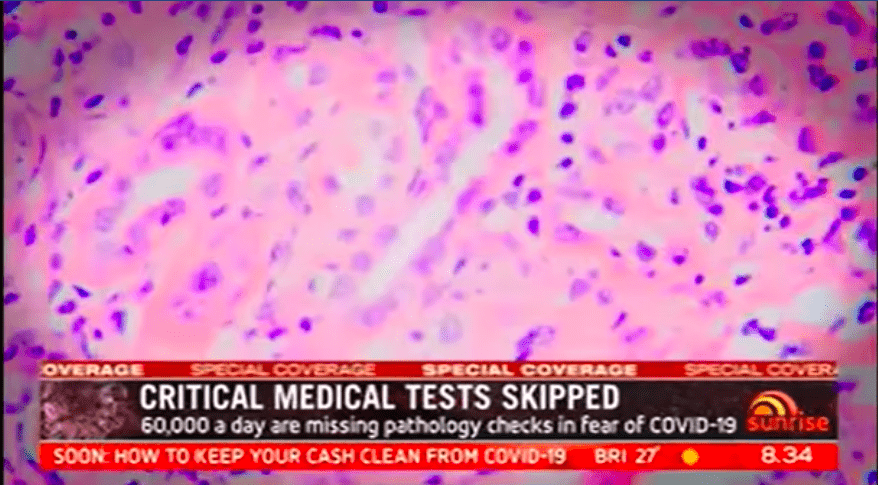
In a time where the words ‘nasal swab’ and ‘antibody’ frequently come up in conversation, you would think that pathology labs are are bursting with demand. Laboratories are processing thousands of COVID-19 tests on top of their usual workload. However, testing for all other conditions has decreased by 40% in the past weeks. This worrying trend linked to a fear of contracting the virus or of being a burden to the health system.
This analysis looks into the use of the keyword ‘pathology’ in all media types over the past 30 days against this time last year. We will use our media monitoring software Meltwater to conduct this analysis.
Pathology has featured in the media more in recent months than in the past decade, as it is the science that diagnoses COVID-19. Readers are served hundreds of articles explaining how nasal swabs and polymerase chain reaction work, the difference between nucleic-acid testing and serology testing, and more. Every day, we are breaking testing number records, and we have learnt to depend on local manufacturers and experts to battle against the virus.
The graphics below show the Media Exposure for the keyword ‘pathology’. This means the number of articles published or news stories aired that contain this keyword.
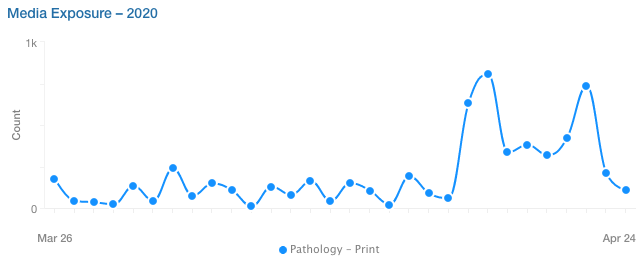
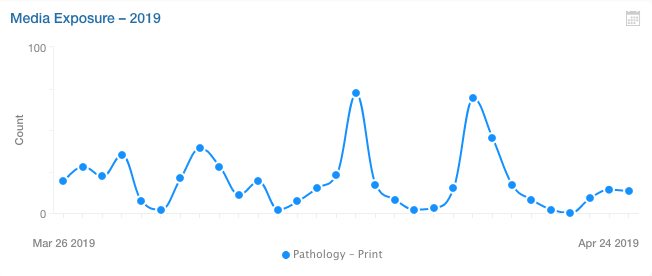
The difference is obvious between the two line-graphs for Media Exposure in print and online.
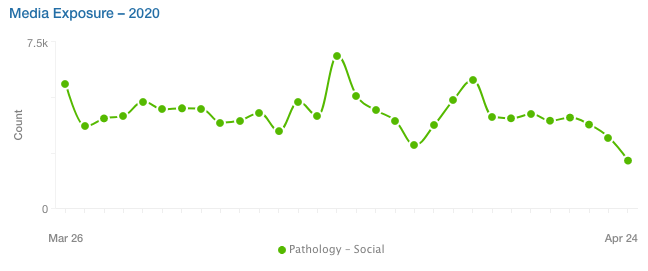
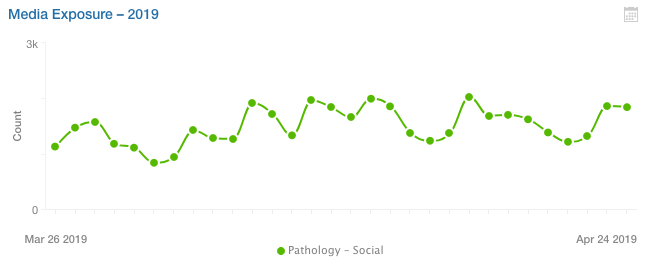
The social Media Exposure measure tracks Facebook, Twitter, blogs, and other social channels. It is not specific to Australia.
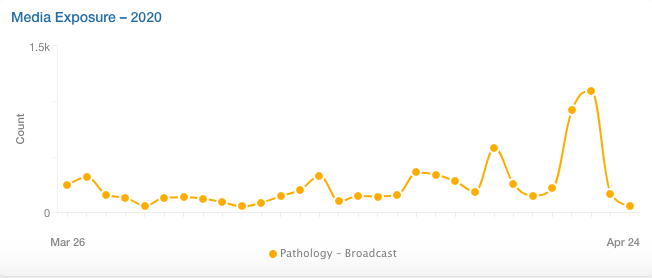
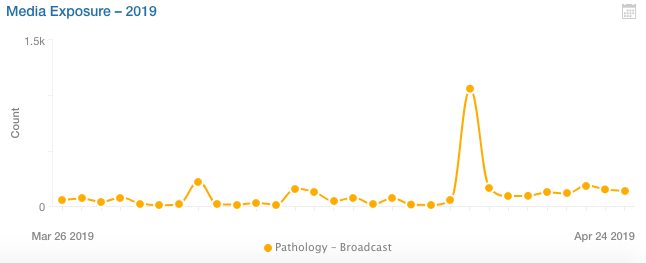
People delaying or missing their pathology appointments was not just 2019’s problem. This worrying trend is happening right this minute in Australia. However, money isn’t the only reason people are missing or delaying appointments this year.
The Royal College of Pathologists of Australasia announced a couple of weeks ago that there has been a 40% drop pathology testing; over 60,000 Australians every day are not getting the tests they need.
This means people living with chronic health conditions are going without their sometimes-vital results. These test results can help health professionals make decisions about their treatment plans. Additionally, people are currently living undiagnosed for serious health conditions that require immediate treatment. When it comes to our health, time is of essence.
This significant drop in pathology testing is due to a number of possible reasons. There is some fear that GP clinics and collection centres in the time of COVID-19. People with chronic health conditions may not want to put themselves at risk of catching the virus. Others may assume that routine medical appointments are not going ahead because health services being too busy at this time. Some may not want to be a ‘burden’ on the health system.
Dr Debra Graves, CEO of the Royal College of Pathologists of Australasia, said: “Pathology providers are experts in detecting infectious diseases. They ensure that all parts of the organisation follow best practice to minimise COVID-19 infection risk. This includes collection centres, where strict hygiene, appropriate distancing and separation measures are in place.”
Sign up to our weekly analyses and healthcare industry articles by getting in touch at: [email protected]